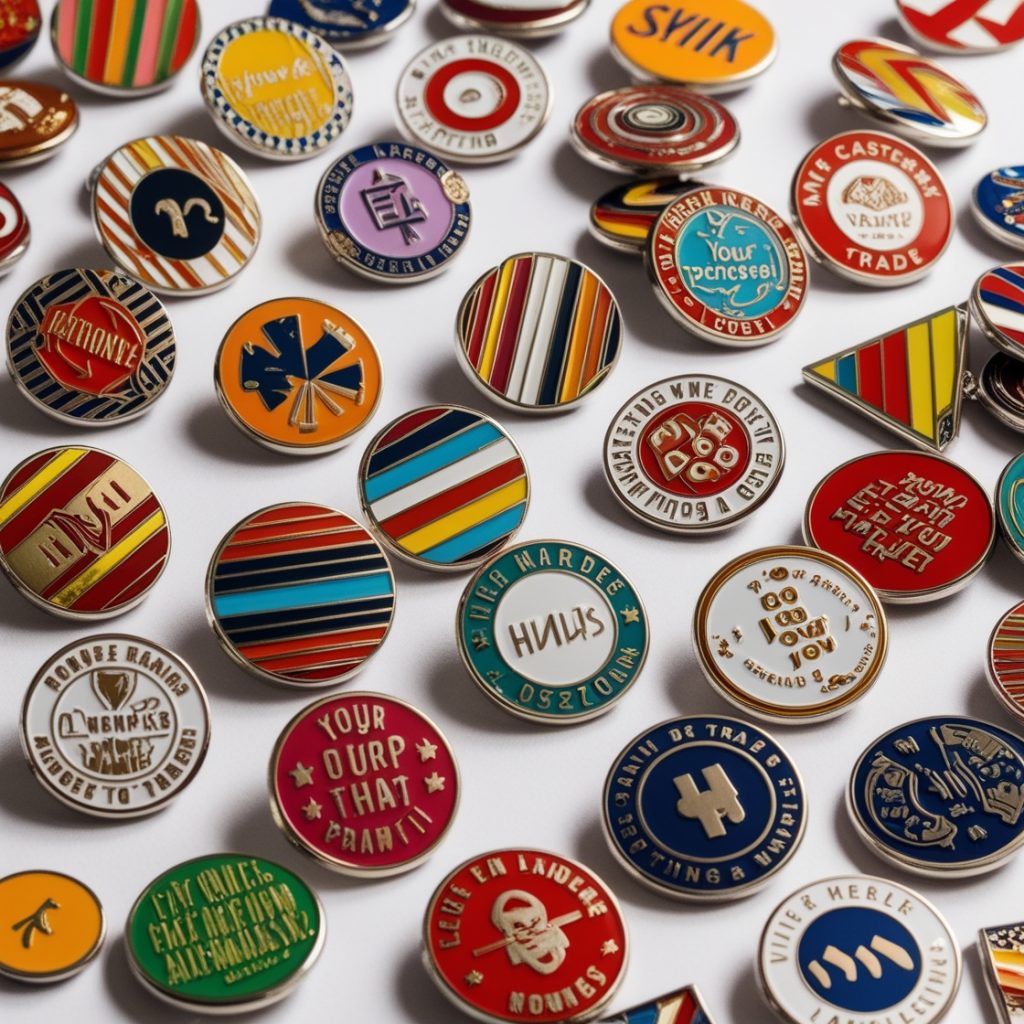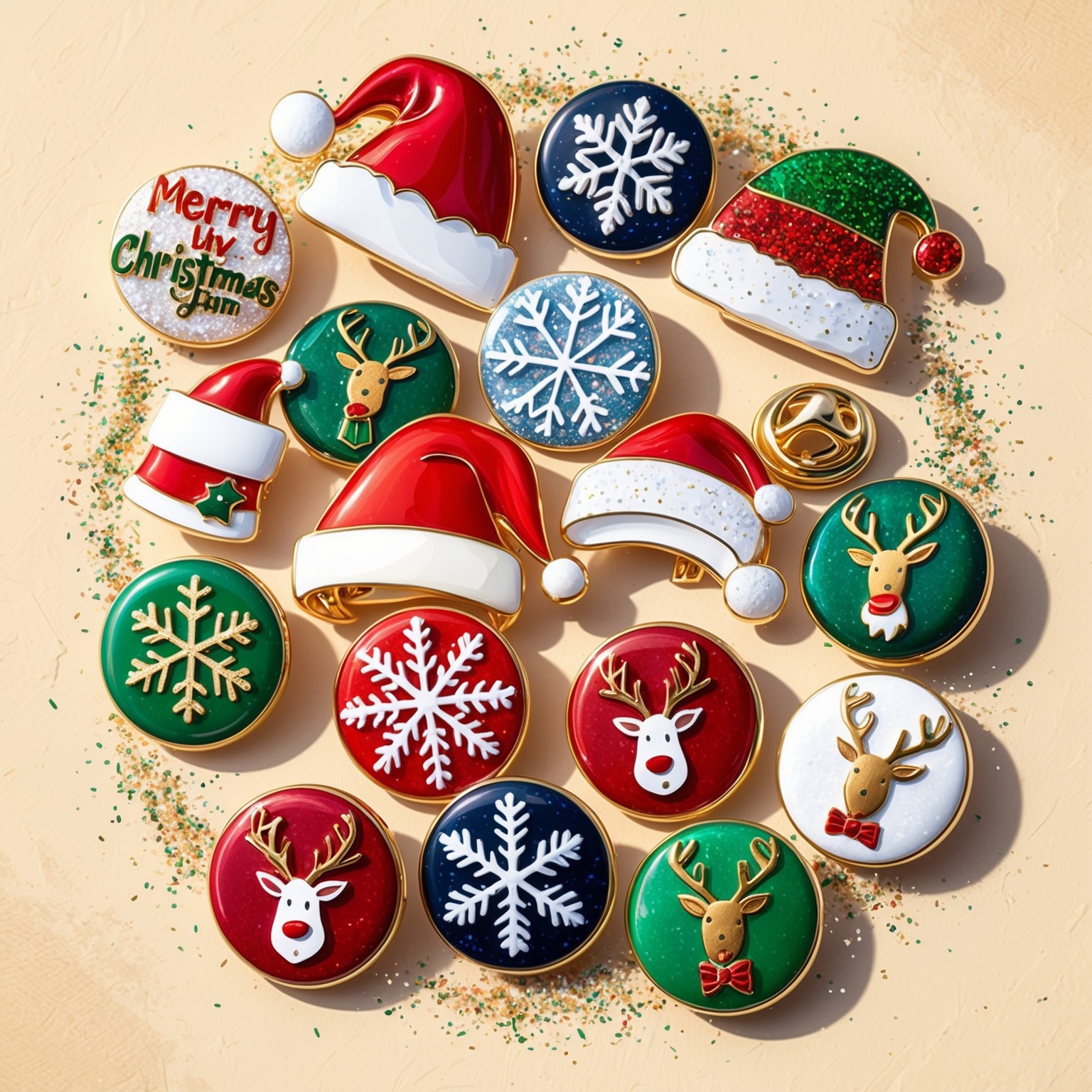The world of sports memorabilia is vast and filled with endless possibilities for collectors. From jerseys and autographs to trading cards and game-used equipment, fans love owning a piece of their favorite teams, players, or events. Among these collectibles, custom lapel pins have emerged as a beloved and growing trend. These small, intricately designed pins hold significant sentimental value for sports enthusiasts. They are traded at games, tournaments, and events, building a unique culture of pin trading that brings fans together.
Whether you’re just starting your sports pin collection or looking to expand your trading network, understanding the ins and outs of custom lapel pin trading can help you make the most of this exciting hobby. Trading these tiny treasures offers more than just the satisfaction of collecting—it’s a way to bond with fellow fans, celebrate your love for sports, and acquire unique pieces that commemorate special moments in your favorite games.
In this article, we’ll explore 11 essential tips for aspiring sports pin collectors, giving you the knowledge and confidence to dive into the world of custom lapel pin trading. From learning the basics to spotting valuable pins and expanding your trading network, these tips will help you hit a home run in the pin-collecting game.
1. Start by Defining Your Focus
One of the first steps to becoming a successful sports pin collector is defining your focus. The world of custom lapel pins is vast, with pins available from countless sports, teams, events, and leagues. Before diving headfirst into trading, it’s important to narrow down what you want to collect.
Choose Your Sport or League
Do you want to focus on a specific sport like baseball, basketball, or soccer? Or perhaps you’re more interested in collecting pins from a particular league, such as the NFL, MLB, or NHL. Some collectors focus on one sport, while others enjoy expanding their collection to multiple sports. Having a clear direction helps guide your purchases and trades and keeps your collection cohesive.
Team or Event Specific Pins
Another popular approach is to focus on collecting pins from specific teams or major sporting events. For instance, you might want to collect only Olympic pins, World Series pins, or pins representing your favorite professional sports team. By defining your focus, you can curate a collection that is meaningful to you and aligns with your sports interests.
Once you’ve established your focus, you’ll be better equipped to make strategic trades and avoid getting overwhelmed by the sheer volume of available pins.
2. Learn the History of Pin Trading in Sports
To truly appreciate the world of custom lapel pins, it’s essential to understand the history of pin trading, especially its roots in sports. Pin trading has been a tradition in various sports for decades, dating back to the early 1900s when Olympic athletes exchanged pins with fellow competitors as a sign of camaraderie. Over time, this tradition spread to fans and attendees of sporting events, especially major tournaments like the Olympics, World Cup, and Little League World Series.
The Role of Pin Trading at Events
At many large sporting events, pin trading is a key activity that brings people together. Attendees often meet at designated trading areas where they can exchange pins with others. This practice fosters a sense of community and excitement, making the experience of collecting pins even more enjoyable.
By learning about the history of pin trading, you’ll develop a deeper appreciation for the hobby. It’s not just about acquiring pins—it’s about engaging in a tradition that connects fans worldwide, creating lasting memories and building connections through shared interests.
3. Familiarize Yourself with Different Types of Custom Lapel Pins
Not all custom lapel pins are created equal, and there are many different types to explore. As a collector, it’s important to familiarize yourself with the various types of pins so that you can identify quality designs and valuable pieces. Here are a few common types of pins you may come across:
Soft Enamel Pins
Soft enamel pins are among the most popular types of custom lapel pins. They are made by pouring enamel paint into recessed areas of the pin, leaving raised metal borders between the colors. This creates a textured, dimensional look. Soft enamel pins are often vibrant and detailed, making them ideal for sports logos and event-themed pins.
Hard Enamel Pins (Cloisonné)
Hard enamel pins, also known as cloisonné pins, are considered higher quality due to their smooth finish. The enamel is applied in layers and polished until it’s flush with the metal, giving the pin a sleek, shiny appearance. Hard enamel pins tend to be more durable and are often used for premium or limited-edition designs.
Die-Struck Pins
Die-struck pins don’t have enamel coloring; instead, the design is stamped into the metal, creating a textured look. These pins are often used for more classic or vintage styles and can be plated in different metals, such as gold, silver, or bronze. Die-struck pins are highly valued for their craftsmanship and are popular among collectors who prefer a timeless look.
Understanding the different types of custom lapel pins will help you recognize quality pins, make informed trades, and appreciate the variety available in the world of sports pin collecting.
4. Focus on Pin Condition for Value and Longevity
As with any collectible, the condition of a custom lapel pin plays a crucial role in its value. A pin in mint or near-mint condition will always be worth more than one that shows signs of wear or damage. When collecting sports pins, it’s important to focus on preserving their condition to maintain their value over time.
Check for Damage or Wear
Before purchasing or trading for a pin, inspect it closely for any signs of damage, such as scratches, fading, or chipped enamel. Pins that have been poorly stored or handled may also show signs of rust or tarnish on the metal parts. Pins in pristine condition are more desirable to other collectors and retain their value better in the long run.
Proper Pin Storage
To keep your pins in excellent condition, consider using a pin display case or collector’s binder. These storage options protect pins from dust, moisture, and damage while keeping them organized and easy to access. If you’re wearing pins on a lanyard or jacket, rotate them regularly to prevent excessive wear.
Maintaining the quality of your pins will not only make them more valuable but also ensure that your collection looks sharp and professional when displayed.
5. Trade with Other Collectors to Build Your Network
One of the most exciting aspects of collecting sports custom lapel pins is the opportunity to trade with other collectors. Pin trading is a social activity that allows you to connect with fellow enthusiasts, share stories, and exchange pins to build your collection.
Find Trading Partners
To start trading, consider attending sports events, conventions, or pin trading meetups. Many conferences or tournaments have designated areas for pin trading, making it easy to find like-minded collectors. You can also join online communities and forums dedicated to pin trading, where you can connect with people from all over the world who share your passion for collecting.
Trade Smart
When trading pins, always consider the value and rarity of the pin you’re offering and the one you’re receiving. A rare or limited-edition pin is worth more than a common one, so it’s important to ensure you’re making a fair trade. Keep in mind that every trade is an opportunity to grow your collection while forming valuable connections within the pin trading community.
Building a network of fellow collectors can help you find hard-to-get pins, learn more about the hobby, and create lasting friendships with people who share your love for sports and collecting.
6. Be on the Lookout for Limited-Edition Pins
In the world of custom lapel pin trading, limited-edition pins are highly coveted due to their rarity and collectibility. Limited-edition pins are often produced in small quantities, making them harder to find and more valuable. These pins are typically released for special events, championships, or milestones.
Know How to Spot Limited-Edition Pins
Limited-edition pins are usually marked with specific details that indicate their exclusivity, such as serial numbers (e.g., 1 of 500) or event-specific designs. They may also feature unique finishes, such as glitter enamel, glow-in-the-dark elements, or metallic accents, which set them apart from standard pins.
If you come across a limited-edition pin in a trade or purchase, consider adding it to your collection, as these pins tend to appreciate in value over time. Always keep an eye out for announcements from sports leagues or event organizers about upcoming limited-edition pin releases so that you don’t miss out on rare opportunities.
7. Research Pin Rarity and Value Before Making Trades
To become a savvy pin trader, it’s important to research the rarity and value of pins before making trades or purchases. Some pins are more valuable than others due to factors like their age, rarity, or connection to a significant event or player. By understanding the market value of pins, you can make more informed decisions and avoid overpaying for common or less valuable pins.
Use Online Resources
There are many online resources, including websites, forums, and price guides, that can help you determine the value of specific pins. These resources provide information on recent sales, current market trends, and the historical significance of different pins. By doing your homework, you can ensure that you’re getting a fair deal and acquiring pins that have long-term value.
Understanding the rarity and value of pins also helps you make better trades with other collectors. For example, if you have a rare pin, you can negotiate for multiple common pins or another rare pin in return, ensuring that both parties feel satisfied with the exchange.
8. Display Your Collection Creatively
As your collection of sports custom lapel pins grows, it’s important to find a creative way to display and organize them. A well-displayed collection not only showcases your pins in the best possible light but also allows you to enjoy your hard-earned treasures daily.
Display Boards and Cases
One of the most popular ways to display pins is by using a pinboard or display case. Pinboards are great for creating custom layouts, allowing you to group pins by team, event, or theme. Display cases, on the other hand, offer a more polished and professional look, protecting your pins while keeping them visible.
If you have limited space, consider rotating your pins in and out of display, showcasing different parts of your collection at different times. This keeps your display fresh and gives all of your pins a chance to shine.
Wearable Displays
Some collectors prefer to wear their pins on hats, lanyards, or jackets to show off their collection in public. This can be a fun way to share your passion with others and meet fellow collectors. Just be mindful that wearing pins regularly can expose them to damage, so rotate them often and handle them with care.
Displaying your collection creatively adds a personal touch to your hobby and gives you the opportunity to share your passion for sports pin collecting with others.
9. Attend Major Sports Events for Pin Trading Opportunities
One of the best ways to grow your collection and enhance your pin-trading experience is by attending major sports events. Pin trading is a common activity at events like the Olympics, World Cup, All-Star games, and Little League World Series, where fans from all over the world come together to trade pins and share their love for sports.
Designated Trading Areas
Many events have designated pin trading areas where collectors can meet up and exchange pins. These areas are often bustling with activity, making it easy to find rare or valuable pins while meeting new people. Attending these events also gives you access to exclusive event pins that may not be available elsewhere, making them a valuable addition to your collection.
If you’re serious about expanding your collection, plan trips to key sporting events where pin trading is part of the culture. Not only will you walk away with new pins, but you’ll also create unforgettable memories.
10. Get Involved in Online Pin Trading Communities
In addition to trading at live events, you can also connect with other collectors online. There are many online communities, forums, and social media groups dedicated to custom lapel pin trading. These platforms allow you to trade, buy, and sell pins with collectors from all over the world.
Benefits of Online Trading
Online pin trading communities give you access to a wider range of pins and help you connect with collectors who share your interests. You can post “ISO” (In Search Of) lists to find specific pins, or participate in online discussions about pin releases, rarity, and collecting strategies.
One of the best aspects of online pin trading is the ability to trade across geographical boundaries. You can connect with collectors in different countries or regions, giving you access to pins that may not be available locally. Just be sure to practice caution when trading online and use reputable platforms to ensure secure transactions.
11. Have Fun and Enjoy the Journey
Perhaps the most important tip for aspiring sports custom lapel pin collectors is to have fun and enjoy the journey. Pin collecting is a rewarding hobby that allows you to express your passion for sports, connect with others, and create a unique collection of memories.
Celebrate Every New Addition
Whether you’re adding a common pin or a rare, limited-edition piece to your collection, celebrate every new addition. Each pin represents a special moment, event, or connection, and over time, your collection will become a visual story of your experiences as a sports fan.
Enjoy the excitement of pin trading, the thrill of the hunt for rare pins, and the connections you’ll make with fellow collectors. Ultimately, the value of your collection isn’t just in the pins themselves—it’s in the memories, friendships, and experiences that come along with them.
Hitting a Home Run with Your Custom Lapel Pin Collection
Collecting and trading sports custom lapel pins is an engaging and exciting hobby that offers countless opportunities for connection, creativity, and growth. By following these 11 essential tips, you’ll be well-equipped to navigate the world of pin trading with confidence. Whether you’re focusing on a particular team, attending major sports events, or trading with collectors online, building your collection is about more than just acquiring pins—it’s about the memories, stories, and friendships you’ll create along the way.
As you dive deeper into the hobby, remember to stay curious, have fun, and enjoy the process of discovering new pins and meeting fellow collectors. Your custom lapel pin collection will grow not only in size but in sentimental value as it becomes a personal reflection of your love for sports and the special moments that make the game great.
In the world of pin trading, each new pin represents an exciting opportunity to learn, grow, and connect with others. Cherish the journey of building your collection, as every pin adds a new chapter to your unique story as a sports fan. Whether you’re trading at major events, exchanging pins online, or curating a personal collection, the experiences and friendships you gain along the way are just as valuable as the pins themselves. Embrace the social and personal aspects of the hobby, and let your passion for sports fuel your growing collection.
Over time, you’ll not only develop a collection that reflects your dedication to your favorite teams and sports but also gain lasting memories and connections that will continue to bring you joy long after the final whistle has blown. Happy collecting!
If you are interested in ordering some high-quality lapel pins, feel free to call us at our Toll free number 1-877-513-4811 or fill out one of our FREE QUOTE FORMS.



